By Katharine Fletcher
We’re sure you’ve enjoyed taking our Ottawa Road Trips trivia quizzes. Now, here’s how you can learn a few more details about the history of Ottawa and the National Capital Region by taking four historical tours—where pamphlets, tour guides and signs will inform you.
Two of my suggestions are tours of cemeteries. Now, some feel squeamish about cemeteries, but I sure don’t. Why? I suppose because when I was growing up in Toronto, my family explored the Mount Pleasant Cemetery—literally the “backyard” to our small apartment—every Sunday afternoon. Renowned as one of North America’s most significant arboretums, where many tree species are labelled, it was a parklike haven for our little English immigrant family.
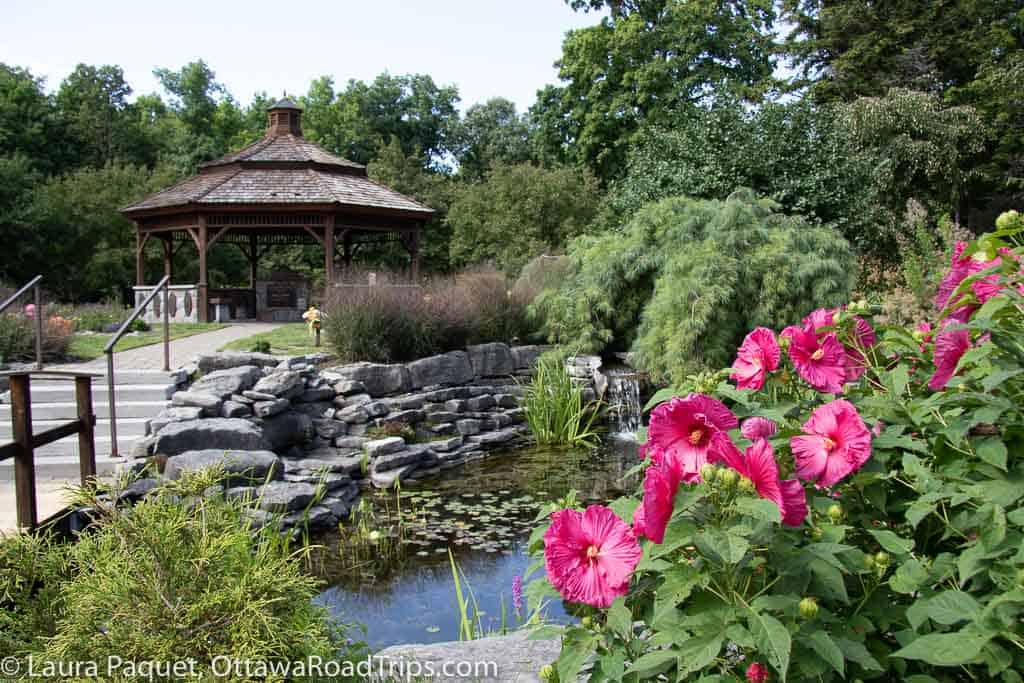
I learned at an early age how to identify Canadian trees, thanks to Mount Pleasant. Also, my parents were interested in Art Nouveau and architecture, and some of the mausoleums and headstones are genuine artistic masterpieces.
And, of course, as final resting places, our cemeteries allow us to learn about many Canadian historical figures and families.
I’ve also offered a couple of outdoorsy rambles for your discovery.
So bring your curiosity and venture outside to soak up a little bit of history of people and places in our beautiful National Capital Region.
Beechwood Cemetery: The National Cemetery of Canada
Established in 1873, Beechwood is the resting place of many famous Canadians
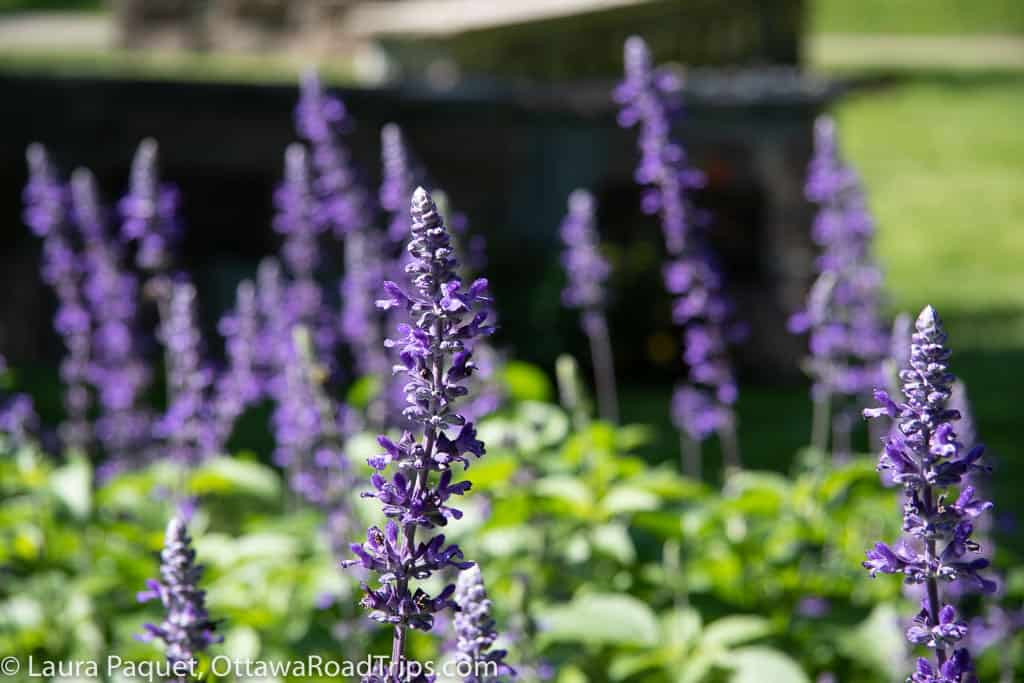
You’ll find Beechwood Cemetery in Vanier, where its gracious, arboretum-like setting offers a beautiful historical destination to explore. In 2001, it was designated as the National Military Cemetery of the Canadian Forces, and a year later, it became a Canadian National Historic Site. More recognition followed, such that today it’s the official RCMP National Memorial Cemetery (2004) and is known as the National Cemetery of Canada (2009).
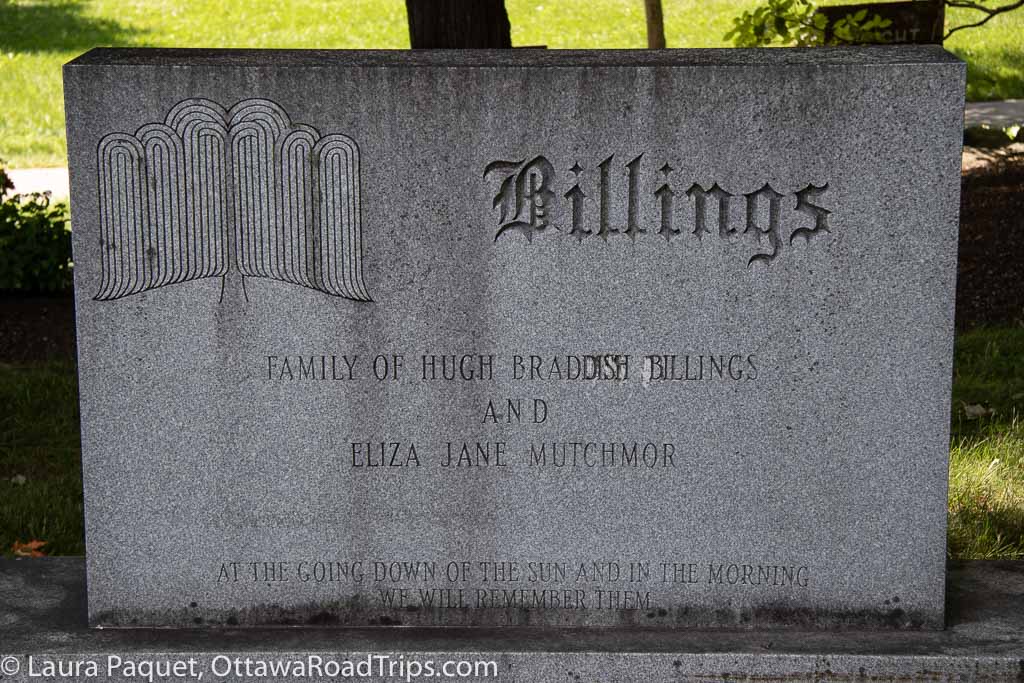
As a teenager, I was a big fan of Canadian Confederation poet Archibald Lampman. And when I was researching my book Capital Walks: Walking Tours of Ottawa, I was delighted to be able to pay him my respects at his grave here in Beechwood, after finding his home in Sandy Hill.
In fact, many famous figures are buried here. They include the inventor of Greenwich Mean Time, Sir Sandford Fleming, who was appointed chief engineer and surveyor of the Canadian Pacific Railway (CPR) in 1871.
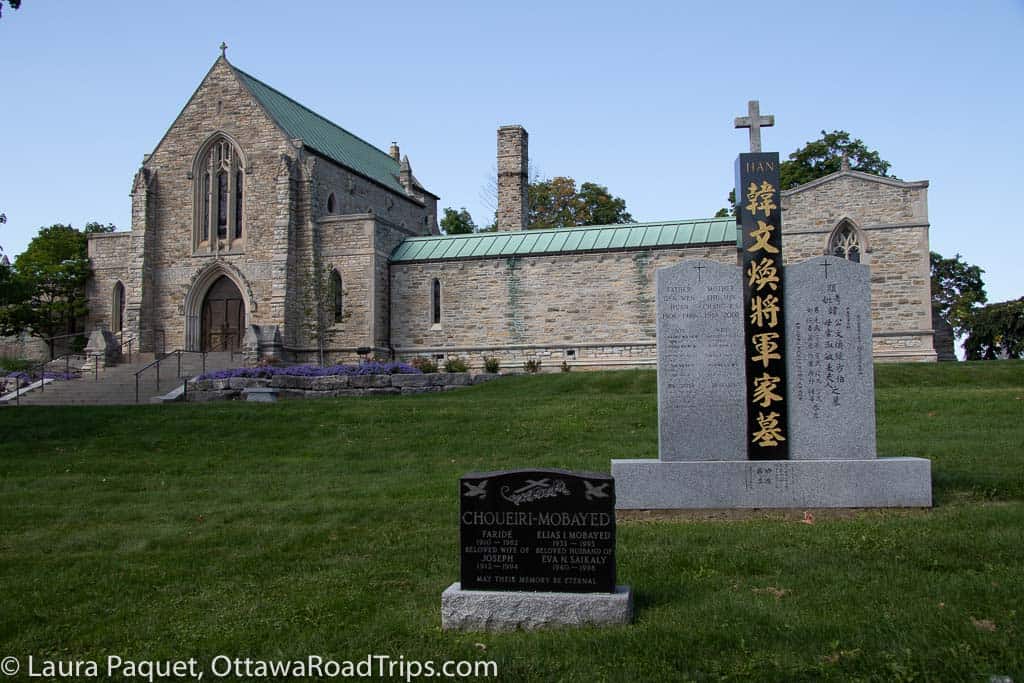
Beechwood is proudly multicultural, and there are intriguing links among communities. Take my mention of Sir Sandford Fleming, for instance. Sure, he surveyed the CPR—but that railway couldn’t possibly have been constructed without the hard labour, determination and courage of Chinese workers and businesspeople. This historical link is represented here at Beechwood; visitors will find a decorative Pagoda of Remembrance, built in 1995, whose scarlet pillars create a stunning tribute to the ancestors of Ottawa’s Chinese community and the difficulties they encountered.
As Beechwood’s website explains, “Many of the cemetery’s early [Chinese-Canadian] occupants were male and buried alone. They had been recruited by agents in China to work on the Canadian Pacific Railway, and when the epic job was done they’d come to the capital, where federal politicians had passed immigration legislation preventing them from bringing their families to Canada.”
Although this area in Beechwood was designated in 1925, the first Chinese person appears to have been laid to rest here in 1903.
The Egyptian, Greek, Lebanese, Latvian, Muslim, Polish, Portuguese, Ukrainian and Vietnamese communities also have specially designated sections in the cemetery. In addition, “families of Japanese, Filipino and Korean descent, and families of Southeast Asian countries, are buried throughout Beechwood,” the website explains. (You can learn more about these cultural communities in this section of Beechwood’s website.)
So how can you explore this fascinating cemetery?
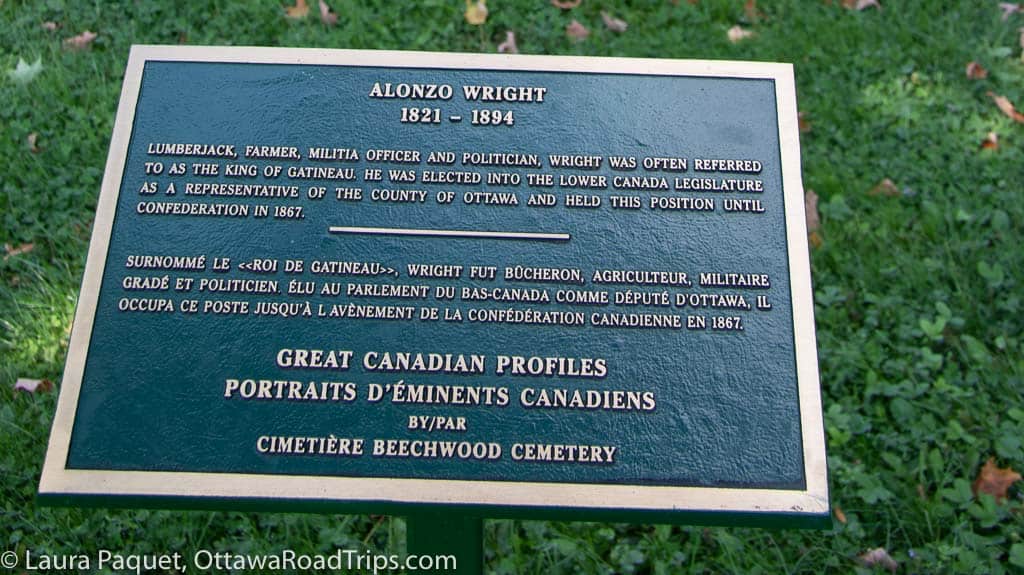
Self-guided tours are enhanced by the 50 or so green Great Canadian Profiles plaques, which are mapped and described in this online brochure. That is how I was able to find Lampman’s grave.
However, there’s something special coming up soon!
Beechwood’s annual guided historical tour is on October 4, 2020 (walks depart at 2pm, 2:30pm and 3pm). You must register in advance and, of course, COVID-19 social distancing is de rigueur.
This year’s tour focuses on famous doctors and nurses whose final resting places are in this park-like setting. Dr. Hamnett Hill, for instance, was born on December 15, 1811, in London, England. In 1854, he became chief surgeon of the Ottawa General Hospital. Nurse Annie Amelia Chesley was born in either 1857 or 1858 near Toronto. She became a nurse, training at Johns Hopkins Hospital in Baltimore between 1893 and 1896, and she became the “lady superintendent” of St. Luke’s Hospital when it was founded in 1897.
Billings Estate National Historic Site
Special guided Settlers’ Cemetery tours at dusk
In 1812, the Billings family first settled what is now the Billings Estate National Historic Site in Alta Vista. You can see a photo of their still-grand house at the top of this post.
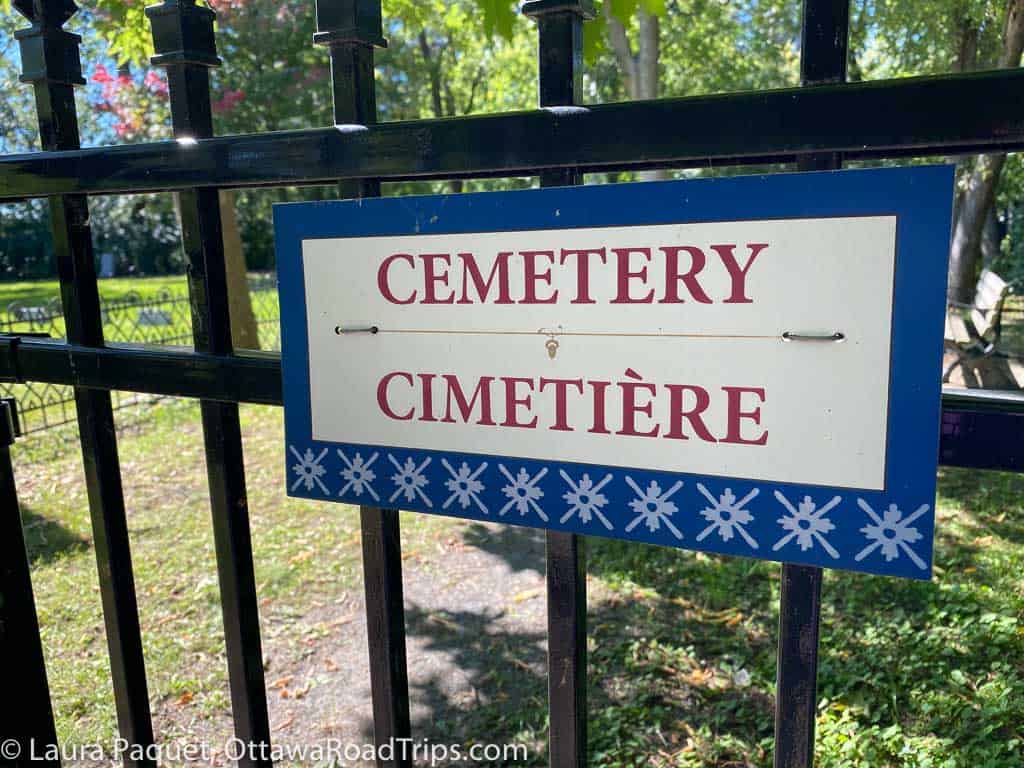
For people aged 16 and up, one-hour guided tours in English of the estate’s grounds and cemetery are currently available on Saturday evenings. Note that starting times vary: 7pm on September 26; 6:30pm October 3, 10, 18 and 24; and 5:30pm on October 31 (also a full-moon-Halloween!), November 1 and 7.
The topic of these tours? Billings Estate folks describe them as featuring “true tales of death, burial, and disease from Bytown and Gloucester Township.”
Since some consider dusk to be “the witching hour,” the tales will take on an extra layer of significance.
Check out the tour details at the Estate’s Facebook Events page. You must register in advance for these guided walks, and the fee is $15.25 per person (taxes included).
Fletcher Wildlife Garden
Celebrating an oasis of native plants and tranquility
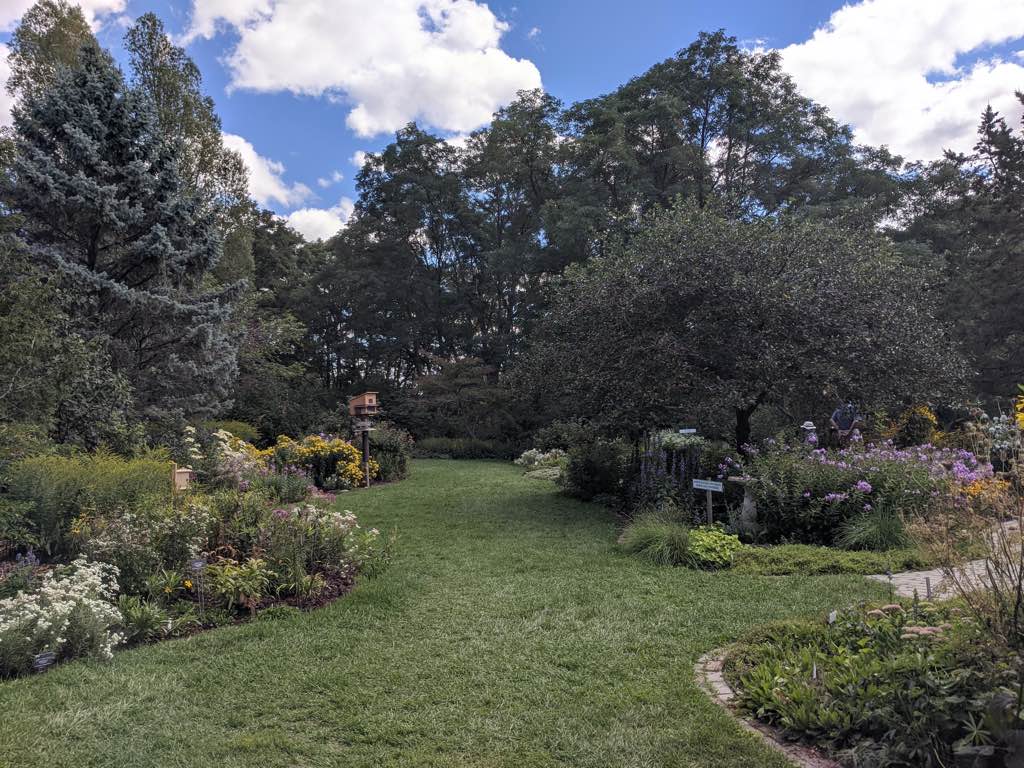
In 1887, James Fletcher became Canada’s first Dominion entomologist and botanist. He worked at the Central Experimental Farm, where, a few years earlier, he had helped found the Ottawa Field-Naturalists’ Club (OFNC).
Fast forward to 1990, when OFNC members created a demonstration garden at the farm. They honoured Fletcher’s memory by calling their teaching space the Fletcher Wildlife Garden.
The club revised its mission for their oasis in 2014, declaring it would “demonstrate to residents of the Ottawa area how to create or restore wildlife-friendly habitats and gardens in their neighbourhood, emphasizing the use of plants native to this region.”
Today, it is a 6-hectare sanctuary adjacent to the Arboretum and opposite the main parking lot of the Central Experimental Farm on Prince of Wales Drive.
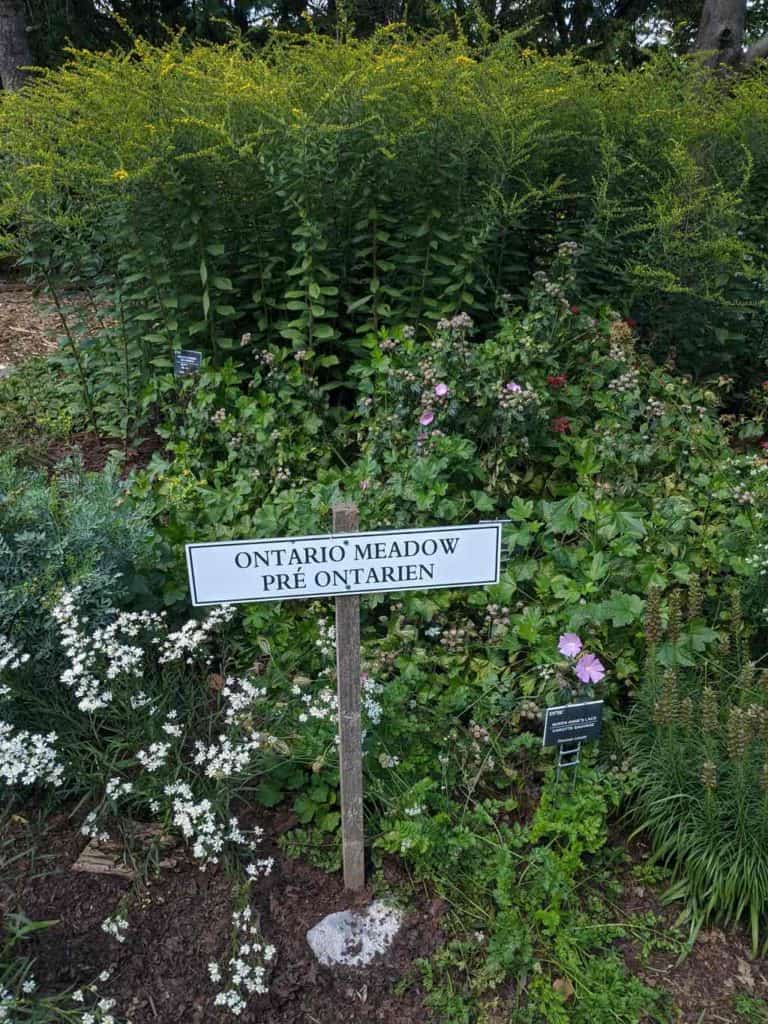
Behind the OFNC’s clubhouse, you’ll find a delightful garden that is carefully planted and labelled, so you can recognize the species you might like to purchase for your own native garden.
You can also pick up pamphlets that describe how to create a butterfly or a bird garden. Moreover, you’ll discover several trails extending into a former meadow, a wetland and wooded areas.
Tips: Take binoculars because many birds visit this tranquil oasis—and, of course, pack your camera or cell phone, too. Here is a map of the garden.
Meech Creek Valley
Drive, hike or bicycle along this pastoral Quebec valley
The Meech Creek Valley hugs the northeastern boundary of Gatineau Park, southeast of the village of Wakefield. Take the Cross Loop Road exit from Autoroute de la Gatineau Nord (Highway 5 north) to enter a pastoral stretch of undulating farmland. (Here’s a map.)

As you progress along what becomes a gravel road, keep your eyes peeled for little pull-offs, where you’ll discover historical signs identifying land use and personages.
For example, the Cross Loop gets its name from settler Isaac Cross, who emigrated here from England in 1831. He built a log house along this road and raised a family, clearing land as his prosperity grew. His son, farmer William Cross, built a home here in 1878. A photo of it reveals a central gabled, variegated-brick house, pretty gardens and a carriage shed at the rear. Nothing remains of the home. There’s also a photo of a barn raising in 1916, where three jaunty-looking men stand atop the roof, posing for the photographer. I don’t know about you, but I think the ladders leading to their lofty pinnacle look truly dodgy.
If you can get your hands on a copy of the Gatineau Valley Historical Society’s Up The Gatineau, Volume 21, you can read Stan Cross’s story, “The Raising,” where he discusses the valley and the 1916 barn bee. A “bee” is the old-time word for the way a community banded together to build a barn. During a typical bee, neighbours would help one another with barn “raisings.”
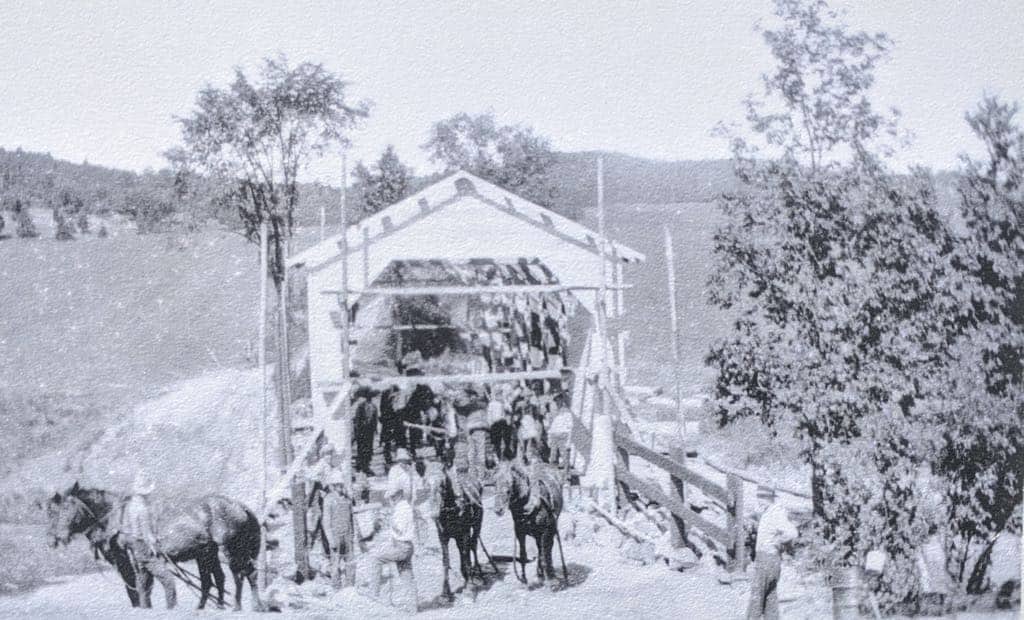
Further along the Cross Loop, you’ll soon come across a covered bridge, where a sign explains the first bridge was built and painted between July 11 and 28, 1932. Interestingly, this was a public works project during the Great Depression. According to West Hull (Chelsea) records, “upwards of 250 people [were] looking to the Municipality for support” in January of 1932. Another sign explains, “A man was paid 25 cents an hour for work on the road; a man and a team of horses received 50 cents.” Times were different back then…
Other signs describe other land uses here: a children’s home called Brookdale, and a seniors’ home, Morningside. The latter opened on December 16, 1960, closing on the same date in 1973. Brookdale was the only Protestant children’s home in West Quebec when it was constructed and, from 1953 until 1975, it “provided a foster home for children in need due to family troubles or illness or death of one or both parents.” At its peak, 45 children were accommodated here.
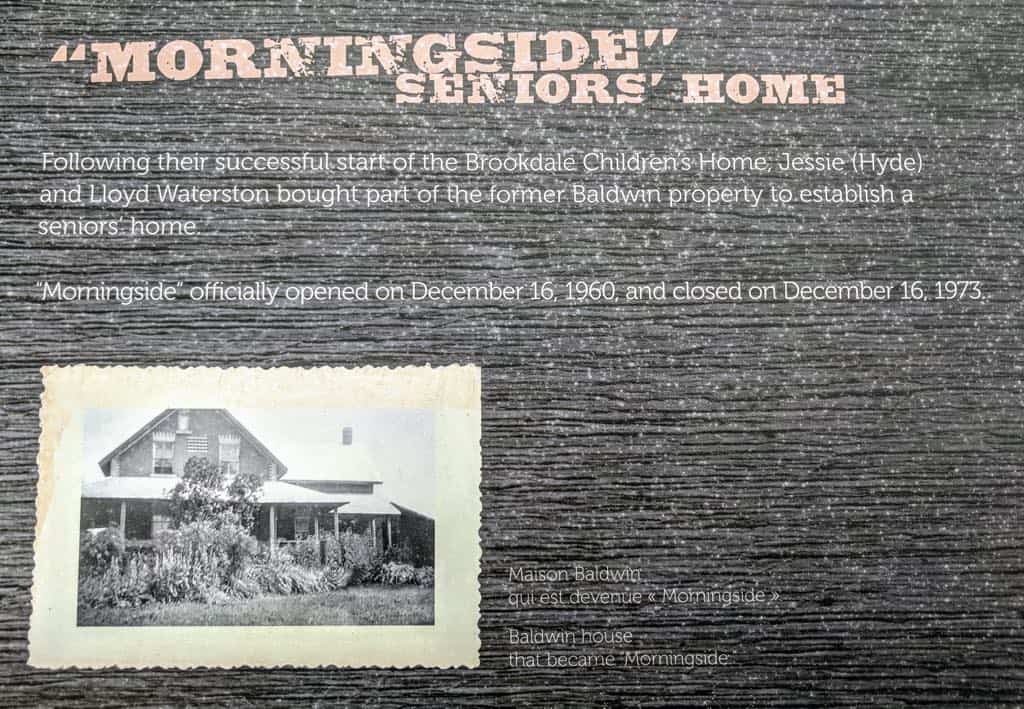
You’ll have to really look for all these signs—but we all know looking for clues is good fun, don’t we? Just be sure to watch for oncoming traffic as you search and to find a safe pull-off in which to park. Alternatively, you could park in the NCC’s P16 (Meech Creek Valley) lot, and stroll or bicycle the route.
About the author and further reading
Contributor Katharine Fletcher is author of three books describing historical hikes, drives and discoveries of our National Capital Region. All were published by Fitzhenry & Whiteside in 2004: Historical Walks: The Gatineau Park Story; Capital Walks: Walking Tours of Ottawa; and Capital Rambles: Exploring the National Capital Region. Katharine welcomes updates from readers; please e-mail her if you have information to share.
Note: The links above to Katharine Fletcher’s books are affiliate links. If you buy the books through those links, Ottawa Road Trips will earn a small (but much appreciated) commission—and, of course, Katharine will earn royalties as well.
Looking for more ideas for day trips and weekend getaways in and around Ottawa? Subscribe to the free weekly Ottawa Road Trips newsletter.
